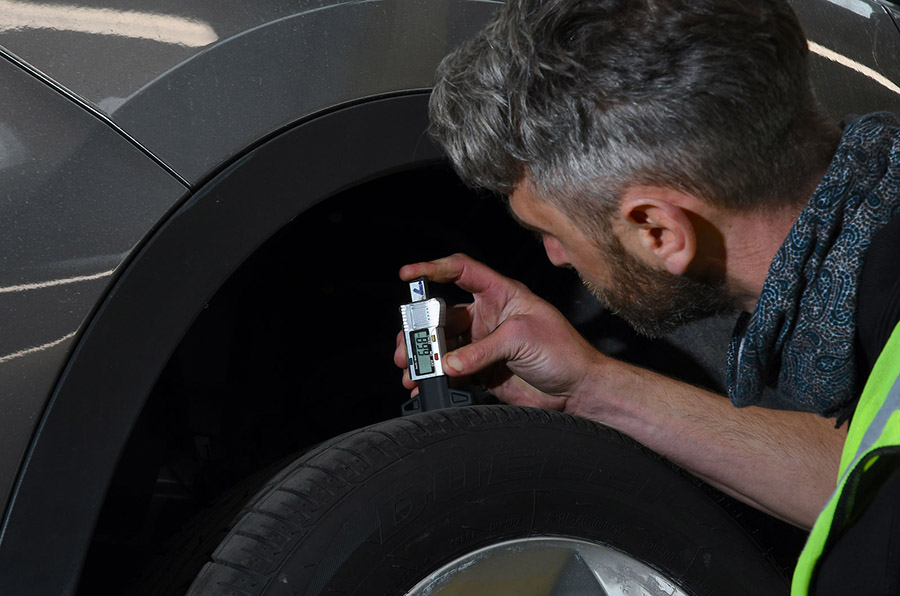Ensure your car easily passes its MOT test by following our comprehensive MOT checklist for 2024. Don’t miss any important checks before your test!
As a car owner, the annual MOT test can be a cause for stress and anxiety. Nobody wants to fail the test and face expensive repairs – or even worse, have their car taken off the road. However, with a little bit of car maintenance and a solid understanding of what to expect, you can increase your chances of passing the test with ease. In this feature, we’ll cover everything you need to know to prepare your car for its annual MOT test. Besides, a lot of these checks should be covered in your routine car maintenance.
What is the MOT Test?
The MOT (Ministry of Transport) test is an annual safety inspection that all vehicles over three years old in the UK must pass to legally drive on UK roads. During the test, an approved MOT tester will check your car’s safety, emissions, and roadworthiness. If it doesn’t pass, any defects or reasons for the MOT failure must be rectified before the car is legally allowed to be driven on the road again.
How often do I need an MOT?
You must have an MOT test every 12 months for cars over three years old in the UK. It is a legal requirement to have a valid MOT certificate to drive your car on UK roads. You can check when your MOT is due by looking at your previous certificate or using the government website’s free online tool. It’s important to book your MOT in advance to avoid any last-minute stress or inconvenience. You can book your car in for an MOT at any time, but if you can take the test up to one month before the MOT expires, the new certificate will be valid until 12 months after the expiry date. For example, if your MOT expires on June 1, you can take the test at any point in May and (if it passes) your MOT will be valid until 1st June the following year.
However, if you book your car in for an MOT and it fails because of a dangerous defect, the previous MOT immediately expires. Therefore, you will need to pass a new MOT before the car can be legally driven on the road again. So, if your MOT expires on 1st June, and you took the test on May 2 and failed, your MOT would expire there and then and you would not be allowed to continue driving until June 1.
If your car fails but there are no dangerous defects reported (it can have a ‘major defect’), then you can continue driving until the original expiry date. That’s why booking in for an MOT earlier is beneficial, as you have longer to rectify any problems before the old MOT expires and can continue driving your car during that period.

How do I prepare my car for an MOT?
Before we kick off our MOT checklist, it’s important to remember that regular maintenance of your car will help prevent any unexpected MOT failures. This will help keep you safe on the road. It’s why we always recommend sticking to regular service/maintenance schedules. But there are a few quick, easy MOT checks you can do before having your car tested. These include checking tyre tread depths, inspecting your lights and indicators, and plugging in all the seatbelts to ensure they secure correctly.
It’s also good practice to look at the dipstick and check the engine oil level and make sure there are no warning lights on the dashboard, these are not directly MOT failures, but any issues here are likely to result in a major fault that would cause a car to fail its MOT.
Below is our MOT checklist that you can refer to. These quick MOT checks can be carried out at home with a mate or a family member, to make sure your car is ready to pass its next MOT.
1. Lights and Indicators
Blown and faulty lights are one of the most common reasons for MOT failures in the UK. Check that all lights and indicators are working properly. This includes sidelights, headlights, brake lights, reverse lights, fog lights, indicators, and number plate lights. Replace any blown bulbs. Also, if possible, make sure they are correctly aligned.
2. Brakes
Make sure your car’s brakes are in good working order. Visually inspect the brake pads, discs, and calipers for any signs of wear or damage. Listen for any unusual noises when braking. Take your car for a test drive to check that the brakes are responsive, and that the car doesn’t pull one way or the other when braking.
3. Tyres
Ensure that your car’s tyres meet the minimum legal requirements. This includes the tread depth, which must be at least 1.6mm across the central three-quarters of the tyre. You should also visually inspect the overall condition of the tyres. Make sure that the tyres are inflated to the correct pressures too. Alternatively, you can always pop into a garage for a free tyre check and get them to check everything for you.

4. Steering and Suspension
Look at your car’s steering and suspension for any signs of wear or damage. This includes checking shock absorbers for leaks and cracks in the steering and suspension components. Take your car for a test drive to check that the steering is responsive and there are no unusual noises.
5. Exhaust and Emissions
You can visually inspect your car’s exhaust system to make sure it is in good working order. Check that all fixings are in place, it’s not excessively corroded, it’s not blowing and there are no leaks. The MOT test will use clever equipment to check the exhaust emissions levels and to make sure your car will meet the requirements on test day. It’s a good idea to take it to a garage beforehand for the emissions to be checked ahead of the MOT.
6. Windscreen, Wipers & Washers
Check your car’s windscreen for any cracks or chips. Ensure nothing impairs the driver’s view of the road. Make sure that the windscreen wiper blades are in good working order and that they clear the windscreen effectively. Top up the screen wash too.
7. Number Plates
Last on our MOT checklist are your number plates. Your vehicle registration is important. Unsurprisingly, cracked, damaged, or incompatible font styles will cause an MOT fail. Ensure that your number plates are in good condition, clean and legible. This includes checking that they meet the legal requirements for font size and spacing too.
Frequently asked questions about the MOT
Below, we’ll answer some of the most frequently asked questions about the MOT, when you need one, whether modifications affect them, and what to expect during the test.
Do I need an MOT to drive my car?
Yes. Driving without a valid MOT certificate is illegal in the UK and you can be fined up to £1,000. Your car insurance may also be invalidated if you don’t have a valid MOT. It’s important to remember to book your MOT test in advance and ensure that any defects or issues with your car are resolved before the test.
Are there any exceptions or grace periods?
No, not really. There is no grace period, and once your MOT has expired you cannot drive the car again until you have one. The only exception to this is that you are allowed to drive the car to an MOT testing station provided the car has been booked-in in advance. There are no defined mileage limits and traffic officers will allow a reasonable distance to find an MOT test centre of your preference, but you’ll be pushing your luck if you try and say you’re driving from Newcastle to London for an MOT!
What if I’m not going to drive my car, do I still need an MOT?
It depends. If the car is going to be parked on a public highway, then yes it will need to have a valid MOT and be taxed at all times. But if you’re keeping it off-road, you can declare it SORN (Statutory Off-Road Notification). This will exempt it from needing an MOT. You can do this online or by post, and it means that you won’t be able to drive the car on public roads until you have a valid MOT and tax. However, you’ll still need to keep your car insured even if it’s declared off-road.
Can Speed Cameras Check For MOT?
Believe it or not, they do. ANPR cameras can check for multiple things while scanning your number plate. One of which is whether or not the vehicle has an MOT. After all, no MOT means no insurance. Both of which are criminal offences. Police cars are also equipped with ANPR, which again will flag a lack of an MOT.
Can I Drive To The MOT Centre Without Tax?
No. It is an offence to drive on any public highway without valid tax in place regardless of the MOT status of the car.

What to Expect During The MOT Test
During the MOT test, an approved tester will carry out a comprehensive inspection of your car to check that it meets the minimum safety and environmental standards. The test takes around 45 minutes to an hour. You can usually sit in the waiting room while the test is carried out. Many test centres also have viewing areas should you wish to watch as your car is inspected.
What Happens if You Fail the MOT Test?
If your car fails the MOT test, the tester will provide you with a list of faults. These will need to be repaired before you can pass the test. You’ll have to get the faults fixed and then take your car for a retest within 10 working days.
What does an MOT advisory note mean?
An MOT advisory note is given when your car has an issue that doesn’t pose an immediate danger but could potentially become a problem in the future. These notes are not considered failures, but it’s important to address them as soon as possible. This will avoid more severe problems down the line. Your MOT tester can provide guidance on how to rectify these issues.

How much does an MOT cost?
The cost of an MOT test varies depending on the type of vehicle you have and where you live. There is a maximum fee set by the government – for a car is £54.85, while for a motorcycle it’s £29.65 – and these can be seen on the Gov.uk website. However, some garages may offer discounts or promotions, so it’s worth shopping around to find the best deal. Remember that getting your MOT done early can also save you money, as you’ll have plenty of time to address any issues before the test expires.
Will Car Modifications Affect An MOT?
Provided you have fitted modifications to your car that safe and legal, then no, it shouldn’t affect the outcome of your MOT. However, there are some circumstances where it could result in an MOT failure. One example would be extremely cambered wheels. Wheels that poke out further than the bodywork is considered illegal. Same with decat exhaust systems. The removal of the cat would result in an emissions failure.
Now, in theory, you could revert some modifications that would result in a failed MOT, like refitting a catalytic convertor before testing. Remember, though, that when driving on the public road, if a police officer suspects the car to be missing items that would cause it to fail an MOT, specifically decats here, then you can be prosecuted.
If the modifications are deemed to have caused the MOT failure, you will need to revert them.




